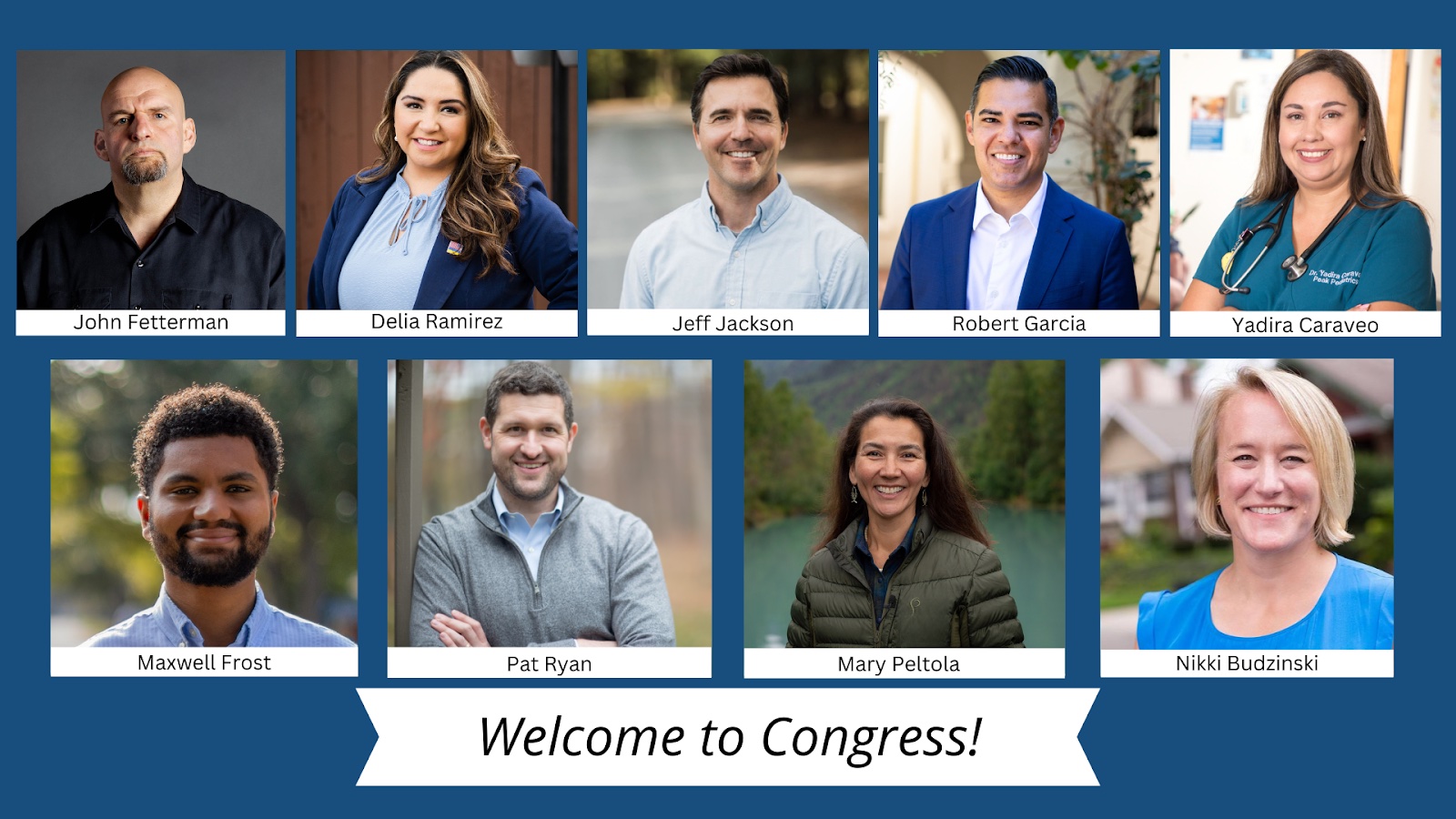Live on the homepage now!
Reader Supported News
Why are so many Black men shot to death in certain American neighborhoods?
I grew up in late-1970s New Haven, Connecticut, a small, remarkably diverse city with a reputation for being a “representative” American urban setting. One way to think about childhood is as a succession of awakenings—moments of sudden, luminous clarity that say This is how the world is. I played a lot of baseball, which meant that as I progressed through the leagues, I roamed the city on my bicycle. In seventh grade at my new private school, many children had braces on their teeth. In the ensuing summer, I played shortstop near the projects in working-class Fair Haven, and one day, by second base, when a kid with a long Italian surname, whom we called “Rap,” showed glittering evidence of having visited the orthodontist, it occurred to me that here, among us, he was the only one.
Another year I played in Newhallville, a Black neighborhood not far from the failing Winchester gun factory, where I had teammates and opponents whose battered apartments and worn clothing suggested families struggling to meet their basic needs. One day I stood on the dusty field thinking about how right there, just up that hill and across a street named Prospect, the green lawns were kept lushly groomed for Yale University’s almost entirely white student body. It wasn’t just the divergent extremes I was absorbing, but their in-your-face proximity. The juxtaposition was bewildering enough to me then that I can still hear the strangely formal interior locution in which, my preadolescent voice not yet changed, I asked myself, Why should this be?
Newhallville is named for George Newhall, the owner of a carriage factory who needed expert hands so badly to keep up with his high volume of orders, he built housing for his workers. Eventually, the neighborhood industry shifted to the Winchester Repeating Arms Company. The Model 1873 was not “The Gun That Won the West,” as Winchester proclaimed, but a profusion of New Haven–assembled ordnance did help American soldiers prevail in two world wars, while providing a decent wage for people without a higher education. Factory labor was often tedious and physically draining, but members of every large European immigration wave lived in Newhallville, bought homes, and saw their children move out and up. Each arriving generation displaced or coexisted with the one that came before—Irish, Italian, German, Eastern European.
Then thousands of Black southerners came to New Haven during the Great Migration, turning the neighborhood into a thriving southern community in a northern city, notable for its churches, shops, and gardens, where people grew okra and peaches and roses on arbors. Farmers from the Carolinas filled their pickup beds with greens and then drove through the night to Newhallville, where they traversed the neighborhood calling, “Come get your vegetables!” You could tell just by walking down the sidewalk, people said, who baked the best pineapple upside-down cake. Nobody locked their doors.
It was a “risen, solid Black neighborhood,” as one local woman described it to me. But during the last third of the 20th century, the quality of Winchester’s products was in bad decline, more and more of its work was done in other states and countries, and thousands of New Haven jobs were disappearing. By the early ’80s, New Haven had become the country’s seventh-poorest city and, the woman said, Newhallville had “fallen to the depths.” Everybody locked up, and some would describe sleeping on the floor to avoid stray bullets. As an adult then living in New York, I could see from newspapers and demographic studies that my home city was emblematic of our country’s intensifying economic inequality. One of the most troubling social ironies I can fathom is the demise of a gun factory leading to an epidemic of neighborhood gun violence.
New Haven really is representative of what remains a persistent American problem, from Trenton to Philadelphia to Baltimore and on across the heartland: fully formed working-class neighborhoods without any well-paying work. In all the years since I was a kid playing baseball, while well-endowed universities in places like New Haven—and their graduates—have become wealthier than ever, their straitened next-door neighbors have suffered a generational lack of opportunity and all the dangers that come with it. The universities have conceived no postindustrial solution, and neither has anybody else.
Although much of the country experienced sharp declines in gun violence after the early 1990s, isolated, impoverished neighborhoods like Newhallville remained relatively dangerous. In recent years, they’ve gotten more so. Last month, JAMA Network Open published a study evaluating the well over 1 million gun-violence fatalities in the United States since 1990, which found that from 2004 to 2021, deaths by firearms increased by 45.5 percent. This is a catastrophic amount of mayhem. Black men are the disproportionate victims, dying of firearm homicide at a rate 22.5 times higher than other Americans. (Older white men use guns to commit suicide much more commonly than anybody else.) During the first year of the pandemic, American homicides increased by 30 percent.
The political right tends to describe gun violence as part of a cultural apocalypse arising from liberal tolerance for criminals in the post–George Floyd years. The left prefers to avoid talking about it at all. Both the desire to exaggerate crime and the impulse to downplay it undermine constructive attention to a horrific problem.
I moved back to New Haven in 2012, to begin work on a book about the neighborhood consequences of structural disparity, including violence. Not long after, I got to know a gray-bearded systems engineer named Ivan Kuzyk who was working for the state of Connecticut, running a research unit thinking about how to reduce the surfeit of young men who were dying on the streets of New Haven, Hartford, and Bridgeport. Seeking a deeper understanding of the relationship between violence and poverty in the most marginalized communities in one of the country’s wealthiest states had become Kuzyk’s professional preoccupation—and would remain so until his recent retirement.
He often talked about how data relevant to murder, the most personal of crimes, were rarely given a personal dimension. Even this new JAMA study, he told me, he found “frustrating,” because it was limited to an analysis of gender, race, and locality, without mentioning class. Instead, “urbanicity” was used as a class proxy, which Kuzyk said did not account for shifting pockets of residential poverty. In these pockets, fear of gunfire is part of daily life for people who can’t afford to live anywhere else. Thinking back across his career, Kurzyk said that the failure to fully acknowledge the relationship between murder and generational Black poverty, and the history of discrimination that has contributed to it, was like “analyzing black lung disease in America without really noticing miners.”
A study he conducted for internal state use in 2018 of people arrested for serious crimes as juveniles found that 30 percent suffered from fetal drug or alcohol syndrome, and another 30 percent had been removed from their families because of abuse or neglect. Kuzyk was surprised only by the high percentages of his unhappy discoveries. He well knew that such traumatic childhood experiences, along with exposure to violence, indicated an increased likelihood of being a victim or a perpetrator of gun violence. “What I came to appreciate,” he told me, “dealing with a lot of people who committed murder, was that they weren’t sociopaths. They had empathy. But for them, it was kill or be killed.”
Scholars such as Yale’s Tracey Meares and Northwestern University’s Andrew Papachristos have found that most of the violence plaguing New Haven and other afflicted American cities takes place in poorer neighborhoods among small groups of people who know one another. From January 2015 to November 2021, there were 634 shootings in New Haven; fewer than 100 have been solved. Fatal gunfire might be statistically rare even in such beleaguered places, but the effect resembles that of shark attacks in beach towns. After a couple of incidents, everyone is terrified. But staying out of the water is more difficult when you’re poor. Under a new chief committed to progressive community policing, New Haven’s murder rate has fallen this year, but young men remain at serious risk. On December 9, two people were shot in Newhallville, one fatally. “I’ve lived here for 40 years,” a passerby told the New Haven Independent. “This ain’t nothing new.” Another pedestrian said, “It makes me scared. Makes me think that could be me too.” On December 20, a teenager known for mowing his elderly neighbors’ lawns was riding his bicycle when a car slowed, a handgun was raised, and he was killed.
After moving back to New Haven, I found that I was far from the only person dismayed by the city’s abrupt demarcations. In Newhallville, I encountered many older people who described the embittering, helpless feeling of watching a neighborhood they remembered as “beautiful” decline to the extent that they were now living in “a forgotten community.” They wistfully recalled the days when everyone had jobs and the angriest people solved disputes with “a fair one”—with fists rather than guns. The pipeline from Newhallville to Connecticut’s prisons was so well established that, as of 2015, only three neighborhood streets did not have a formerly incarcerated person living on them. When I spoke with people who’d been to prison for committing a violent crime about what had sent them there, many brought up the hopelessness they saw around themselves as kids, their exposure to violence at a young age—they described themselves as “a product of my environment.”
If you believe that your own future is doomed, and of no concern to those with the apparent resources to do something about it, your resentment might be acute. Seeing that opportunity exists for those next door, but not for you, can inspire stoic acceptance, humiliation, shame, rage, or despair. People who commit violent crimes, Ivan Kuzyk said, were typically driven by alienation, by the feeling that they lived far outside the perceived norms of American existence. One young person told Kuzyk that he put on a bulletproof vest every day with his underwear.
In agreement with Kuzyk’s general views on violence was a leading Black New Haven criminal-defense and civil-rights lawyer, Michael Jefferson, who told me that among his clients, a lack of sources of meaning, and a persistent sense of being endangered, wore on people, pounding at them until they valued neither their own life nor the lives of others. Their interactions with the only official city representatives they saw on a regular basis, the police, could deepen this anomie. “They think, Cops don’t care about us the way they care about life on the other side of Prospect Street,” Jefferson said. For evidence, you had only to notice that the blue emergency “panic phones” installed along Prospect and elsewhere on Yale’s campus were conspicuously absent in neighborhoods like Newhallville, where there was much more frequent reason for alarm. Instead of panic phones, what Jefferson’s clients reached for in order to protect themselves was a gun.
Anthony Campbell, Yale’s chief of police, has spent his life thinking about inequality and its depleting consequences. Campbell considers it crucial that his Harlem childhood took place far enough from Columbia University that he didn’t have to confront the educational opportunity he would have assumed was not for him. His mother was a corrections officer at Rikers Island; his father was in and out of prison. When Campbell became the first member of his family to attend college, he joined the Yale class of 1995. He later received a master’s degree from Yale Divinity School. He joined the New Haven Police Department and eventually became its second Black chief, before returning to Yale. One day, when he was still the city’s chief, Campbell talked with me about the potent implications for young people living close by an elite college and yet a world away. “When you can walk three minutes,” he said, “make a right, and see nothing but wealth and security and well-being, happiness, people with future outlooks hopeful and bright, and you’re looking over your shoulder because you might be harmed—you worry about eating, rent—that wealth becomes a magnifying glass that takes any light and turns it into a laser beam that cuts you to the core.” Young people, he said, are forced to think to themselves, “They don’t care. They’re right there, they have to notice, and they don’t care.” And that becomes: “I got to do what I got to do.”
I asked people from New Haven serving time in Connecticut prisons about one intelligent, academically motivated Newhallville teenager who’d become neighborhood-famous for shooting people before being murdered himself. The explanation a young man who knew him offered was: “Where he came from, they glorify violence. People want recognition. It goes from carrying a gun to shooting at people to shooting people to killing people. There’s a [feeling of] you don’t give a fuck anymore. Shoot somebody. It’s nothing.” A police officer in whom the teenager had confided told me that, when he urged him to change his life before he ended up dead or imprisoned, the boy responded, “What else is there?” Another person who knew him said, “Violence is normalized in his world because poverty is violent. [He’s] only the extreme version.”
Yet only after I was introduced to a young Black man from Newhallville named Bobby, who asked me to use just his first name, did I begin to fully appreciate how severe the consequences of this kind of social separation could be for children. As a boy, Bobby’s neighborhood reputation was for being “just around,” uninvolved in “the game” (selling drugs) or “the violence.” He described himself as “a traveler,” the rare New Haven kid who rode his bicycle throughout the city, including across Prospect Hill. “Taking everything in,” he said. “That’s what’s different about me.” To him, there was agency in being a traveler, and also revelation: “Come over that hill, it’s a whole different reality.” One year, in fourth grade, Bobby ended up in a classroom with white students. His belief that an integrated classroom was “way better” for everyone matches the findings about exposure to different neighborhoods and people by scholars such as Raj Chetty and Rucker Johnson. But in fifth grade, Bobby was back to sharing a classroom with only other students of color.
Growing up in his neighborhood, Bobby said, “You feel the harm.” He was referring to the kids he knew who were hungry on a regular basis, whose (working) mothers were getting repeatedly evicted. When Bobby tried remembering how many kids he grew up with who’d been shot, he lost count. All of this, he said, meant childhoods riven by fear. One reason Bobby bicycled up and across Prospect Street was for respite from danger: “On Prospect, nothing happens.”
It might be natural to wonder why, if there’s a causal relationship between inequality and shootings, aggrieved young people wouldn’t shoot those who conspicuously have more. But, like opportunity, violence stays in its own neighborhood, where frustration festers. Bobby believed that when someone did have a conspicuous success, other people could take it amiss, wanting to pull the person down for emphasizing their own failures by prospering. Bobby described how inequality could contribute to homicidal rage: “You’re living in the rusty, dirty neighborhood, and then [you see] mansions, and we’re struggling—it adds a level of anger.” Both scholars and locals I spoke with agreed that in neighborhoods where economic opportunity, and hence agency, is severely limited, a gun is a source of power and prestige.
When I met Bobby, he was in prison, serving a 38-year sentence for a murder he hadn’t committed. At 16, Bobby was arrested after an elderly man was killed not far from his home. Forensic evidence and local people suggested that the likely shooter was, in fact, the neighborhood-famous teenage shooter. This is another way of saying how much place matters in America. Innocent kids on the Newhallville side of the hill are more vulnerable to dangers that include overzealous police officers mistaking them for killers. After serving nine years, Bobby’s conviction was overturned, and he was set free. His new challenge became trying to find a well-paying job with a résumé that said only prison.
The problems of America’s isolated city neighborhoods are not new, nor are they original to the United States. After Anton Chekhov visited a Russian penal colony in the 1890s, he reflected, “Our intellectual classes have been repeating the phrase that every criminal is a product of society, but how indifferent they are to this product!” Indifference is such a crushing word. As children, whatever we observed about other kids’ struggles, we never discussed. As grown-ups, we usually do the same, in part because race- and class-segregated cities shield people from others’ experiences. Such distance and detachment from the plight of the poor allow you to believe that it’s all their problem, their fault. “New Haven is an angry city,” people here say. There’s a lot of that feeling in this country right now.
Bobby left prison without marketable skills and, though innocent, found himself treated like any other former prisoner. He eventually got some compensation from the state, but in the meantime, he searched for a job. He was rejected over and over, even for a position as the person responsible for collecting the scattered, empty shopping carts in a Home Depot parking lot. Many people leave prison with the best intentions but eventually resort to crime because they can’t get hired. Bobby didn’t do that. Instead, unable to find fulfilling work, eventually he just left town.
Follow us on facebook and twitter!
PO Box 2043 / Citrus Heights, CA 95611

















